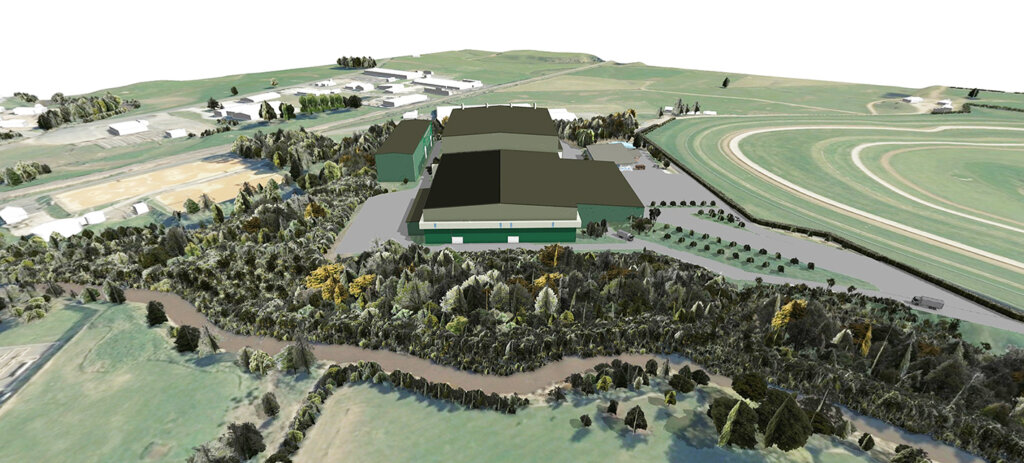
Clyde Graf

A digital illustration of the proposed waste to energy plant.
Over 900 submissions were received by Waipā District Council on the Waste-to-Energy incinerator consent application in Te Awamutu. That’s a record number. A large majority were in opposition. So why the concern?
The proposal, yet to be considered by an independent hearing panel, is to incinerate 150,000 tonnes of waste a year. The waste will include used tyres, general rubbish, and plastics. The electricity generated is expected to power 15,000 local homes.
The waste-to-energy incinerator concept was first developed in Germany in the late 19th century. It’s not new technology. In fact, It’s a crude method of generating energy. Basically, a steam engine.
As examples, incinerating one tonne of waste generates around five million BTUs (British Thermal Units), whereas, recycling a tonne of waste can produce over 15 million BTUs. Burning 50 tonnes of waste a day produces one megawatt of power, whereas a single wind turbine can produce over two megawatts a day.
Not surprisingly, this issue has sparked up the locals. For starters, industrial-scale incinerators destroy junk, but while doing so they produce novel, toxic substances. Highly toxic substances. Substances like dioxins. In fact, when trash is burned, the toxic residues are compounded. In Germany, the toxic ash is placed into specially designed bags and buried in salt mines. It’s classed as hazardous waste.
Dioxins can lead to cancer, interfere with the immune system and hormones, and cause reproductive and developmental problems. They accumulate in the fatty tissues of animals – like humans – and can impact the food chain. Independent off-site monitoring in Spain and France, near to incinerators, detected dioxins in chicken eggs at unsafe levels. Women can eliminate in-body dioxins, but only by passing them on to their unborn child during pregnancy. Men cannot.
The Te Awamutu plant is planning to combust 480 tonnes of waste a day to produce steam, which will propel a turbine, which in turn produces electricity. Twenty-three tonnes of ash will be generated a day, most of which will need to be disposed of in a dumpsite approved for hazardous waste. The hotter the temperature gets, the more toxic the ash.
Nearly half the cost of an incinerator is consumed by air pollution control and monitoring. However, should this consent be granted, self-regulation and monitoring, as we see in other controversial industries, would not be appropriate. Independent oversight will be vital. Unintended consequences must be expected, as in the other industries producing and distributing toxic substances.
Zero Waste strategies are cleaner, more effective, and more community friendly. Zero Waste strategies achieve up to 80 per cent diversion from landfill, as opposed to incinerators, which reach a 75 per cent reduction in waste, accompanied by 20 per cent hazardous ash.
More focus and planning needs to be put into recycling, reusing, and repairing. Once on board, industry has plenty to contribute. We need a future with cleaner solutions, not ones that leave a toxic legacy.
Thanks to Professor Paul Connett and Reality Check Radio for their input and expertise.
This is my personal opinion.










